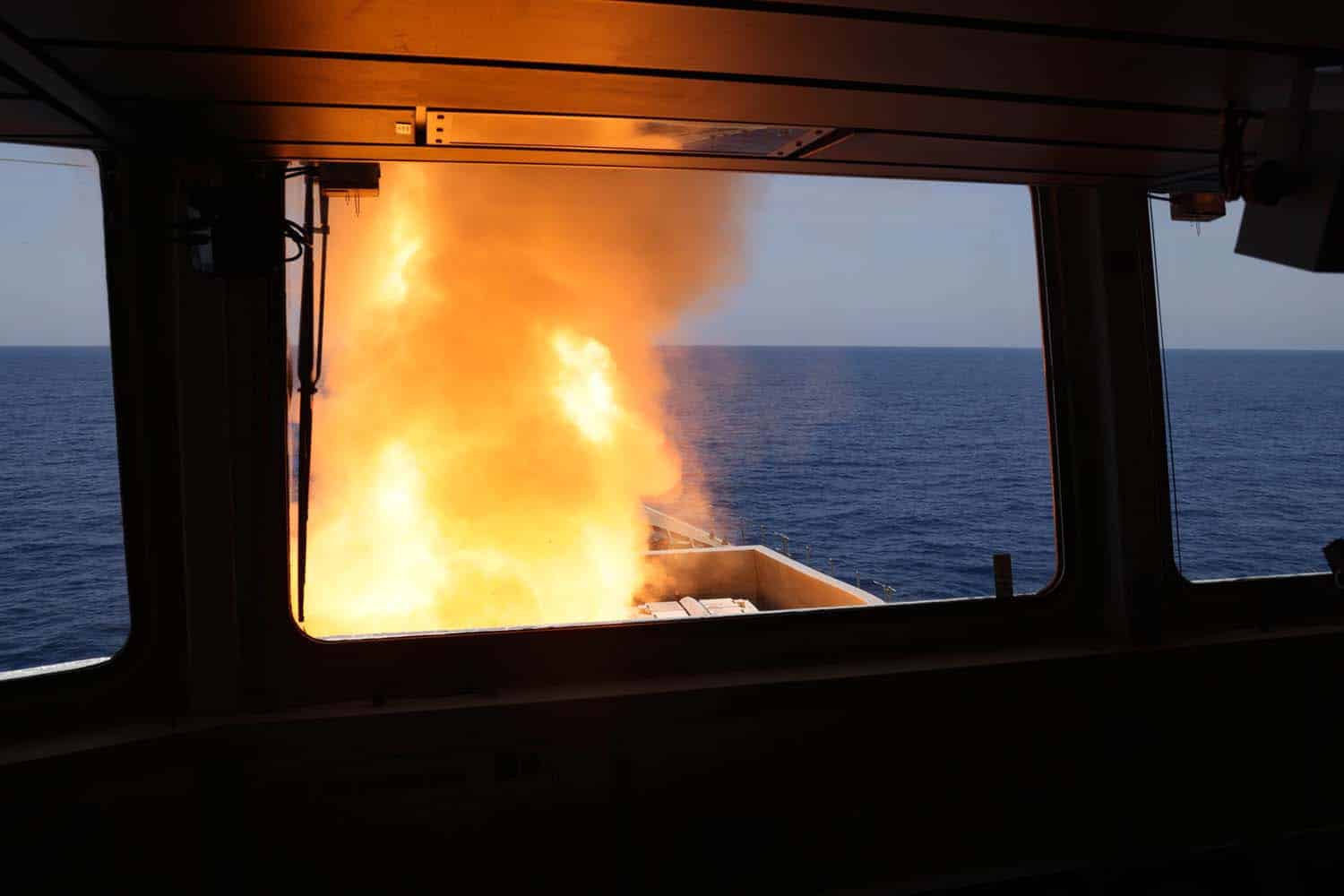The Type 45 or Daring-class air-defence guided missile destroyer HMS Diamond (D34) has shot down a missile fired by the Iranian-backed Houthis from Yemen. The crew of the Royal Navy warship used her world-class Sea Viper missile system to shoot down the missile, which was targeting a merchant vessel, in the Gulf of Aden yesterday (Wednesday). HMS Diamond is currently deployed in the Red Sea and Gulf of Aden to deter Houthi attacks, ensure freedom of navigation, and make international waters safer and more secure for merchant vessels. This deployment is part of the UK’s broader response to Houthi attacks, which has also included intercepting weapon-smuggling to Yemen, imposing sanctions on Houthi members and conducting proportionate and targeted strikes against Houthi military targets. The UK remains committed to deterring the Houthis from their indiscriminate attacks in the Red Sea and Gulf of Aden.
HMS Diamond has operated in the region since March, having taken over from HMS Richmond. During her deployment, HMS Richmond successfully repelled a Houthi drone attack in the southern Red Sea, shooting down two attack drones using Sea Ceptor missiles. HMS Diamond previously operated in the region in December and January, maintaining a near constant presence in the ‘high threat area’ of the Red Sea. The destroyer came under fire in three separate attacks by Houthi rebels, successfully destroying nine drones using her world-class Sea Viper missile system and guns. The ship is equipped with Sea Viper missiles as well as Phalanx machine guns and 30mm cannons on each side of the ship – close-in weapons. The Phalanx can fire more than 3,000 rounds a minute. The crew have also used the 30mm cannon to successfully shoot down a Houthi drone.

The Aster is operated by the United Kingdom as an export customer, and is an integrated component of the PAAMS air defence system, known in the Royal Navy as Sea Viper. Sea Viper is one of the most sophisticated weapon systems to date and is capable of defending the new battleships, and other vessels sailing with them, against missiles approaching from any direction and at supersonic speeds, representing a huge leap in capability for the Royal Navy. The Aster missiles were developed to intercept and destroy the full spectrum of air threats from high-performance combat aircraft, UAVs and helicopters to cruise, anti-radiation and even sea-skimming supersonic anti-ship missiles. MBDA has received three contracts worth around £400 million to boost and sustain the Sea Viper principal area air defence system of the Royal Navy’s Type 45 destroyers. Two contracts, called Sea Viper Evolution, will enable the Type 45 Destroyers to defend the Carrier Strike Group against anti-ship ballistic missiles (ASBMs).
HMS Diamond is the third ship of the Type 45 or Daring-class air-defence guided missile destroyers built for the Royal Navy. She was launched in 2007, and completed her contractor’s sea trials and arrived at her base port in 2010. It is equipped with a SAMPSON active electronically scanned array multi-function radar system that allows the Diamond to track 2,000 threats from over 250 miles away, a Sea Viper missile system that can launch eight missiles in under 10 seconds and can guide up to 16 missiles simultaneously, a Wildcat HMA2 helicopter with Martlet air-to-surface missiles, and a 4.5-inch Mark 8 naval gun. In December 2023, Diamond shot down a suspected attack drone launched from a Houthi-controlled area of Yemen, with a Sea Viper missile, in what the UK Ministry of Defence said was the first time in decades that the Royal Navy had shot an aerial target in anger.















